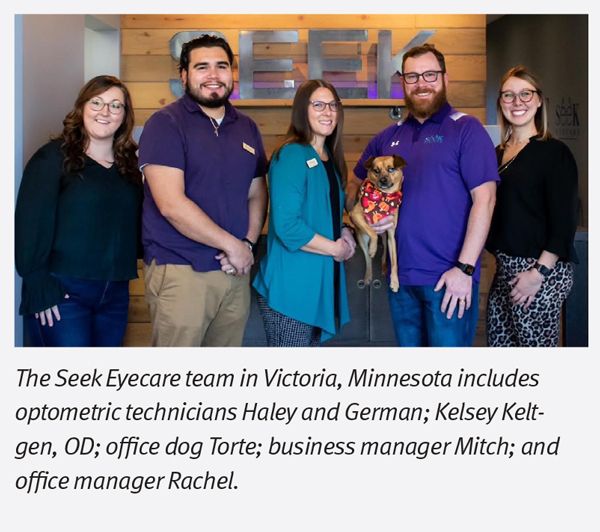ECP Viewpoint: Seek Eyecare
It was 2019 when Seek Eyecare in Victoria, Minnesota, brought its first sustainable brand into the office. The journey began with Arbor Eyewear, and was inspired, really, by Arbor’s commitment to supporting children in foster care—something particularly important to Kelsey Keltgen, OD.
Office manager Rachel McKennon told VM, “Mitch, Dr. Keltgen’s husband, was adopted as an infant, so Arbor’s passion to donate a percentage of their proceeds to finding permanent homes for children in foster care was important to us. It was a cherry on top to learn that they plant a tree for every frame sold.”

|
|
|
|
As McKennon explained, this journey did not necessarily begin with a passion for sustainability. “I wouldn’t say we were looking for a sustainable option necessarily, we were more looking to partner with brands/companies that have a passion for giving back to their communities. Arbor did that, and then some.”
Seek has recently added Eco to its frame offerings, too, and moved its sunglass collection to its regular boards to showcase the new brand. Plus, the office partners with TerraCycle as a drop-off location for contact lens waste and gives patients their annual contact lens supplies in reusable Seek Eyecare branded tote bags.
McKennon said, “We’re not big on banners or any crazy POP, but we always have Arbor, TerraCycle, and now Eco’s POP and materials on display. It’s a great way for patients to see what the brands are about when the opticians are busy. Long term we hope to see more eyewear brands convert to more sustainable practices, and to place a big emphasis via social media on the companies that do so.”
The appeal of a sustainable option varies from person to person, but McKennon cited one passionate patient in particular. “We have a young male patient, about 15 years old, who is environmentally conscious. When he came in for his routine eye exam a few years back, we told him about Arbor and he was adamant that he would only wear Arbor. He even got his grandparents—that live in Florida, by the way—to come here to get Arbor glasses.”
When it comes to the higher price for sustainable eyewear, she said, “I think there will always be a handful of patients that are more conscious of the final price, but I’d say most of our patients would be willing to spend a little more on something that has a positive ripple effect. We’re in a small, tight knit community, with huge support for small businesses.
“Our local cafe and bakery down the block uses compostable drinking cups, even for iced beverages, and they always have a line out of their door. I think that as long as the patient is well-informed, sustainability can be a huge selling point.”
|